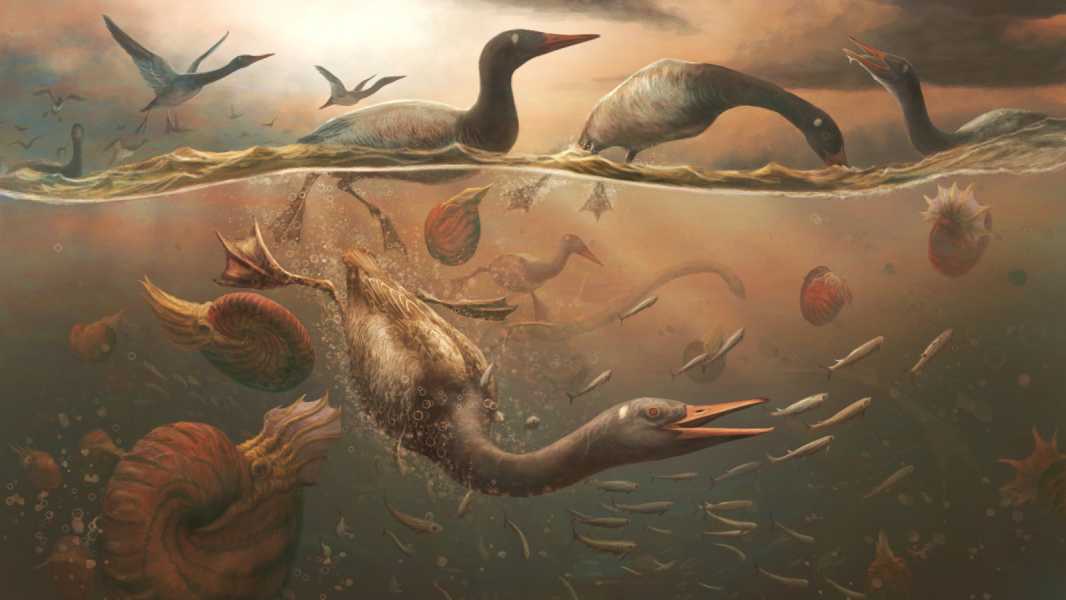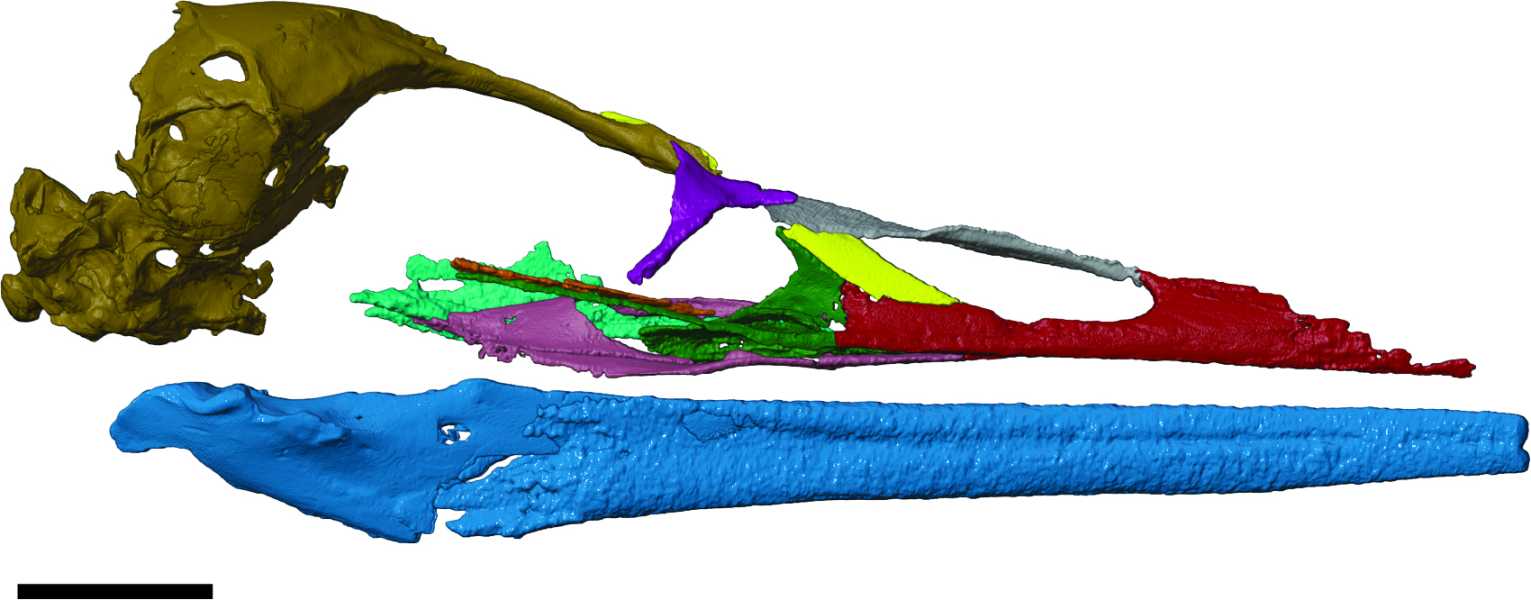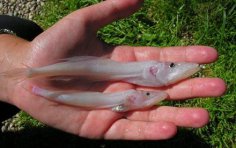
Vegavis iaai lived in Antarctica during the period when an asteroid struck Earth, killing off non-avian dinosaurs. (Photo courtesy of Mark Witton)
Scientists in Antarctica have found what may be the oldest modern bird ever discovered. The fossil, which is about 69 million years old, may finally settle a long-running debate about the origins of modern birds.
The nearly complete skull belongs to Vegavis iaai, a species of waterfowl thought to be an ancient ancestor of modern ducks and geese. The species coexisted with dinosaurs like Tyrannosaurus rex and may have survived the mass extinction at the end of the Cretaceous period, according to a new study.
Study co-author Julia Clark, a paleontologist at the University of Texas at Austin, pointed to the first V. iaai fossil found on Vega Island in Antarctica in 1992. The fossil was estimated to be 66 to 68 million years old. She suggested that the species was related to modern birds, particularly waterfowl. Not everyone agreed, however, because scientists were missing a key piece of the puzzle: the creature’s skull.
“[The original fossil] was just a completely different part of the skeleton. When you're talking about birds, the skull has a lot of phylogenetic, or informative, characteristics that tell you what species it is,” study co-author Patrick O'Connor, an evolutionary biologist at Ohio State University, told Live Science.
The new V. iaai fossil, which is 68-69 million years old, was found during an expedition in 2011, but its analysis has only now been completed. The study was published Wednesday (Feb. 5) in the journal Nature.
The discovery of the new skull has given scientists a chance to learn more about the species and how it fits into the bird family tree. They found that, unlike prehistoric birds that lived during the Jurassic and Cretaceous periods (201.3 million to 66 million years ago), V. iaai has features similar to modern birds, including a braincase similar to modern birds and a unique bone at the top of its bill. In most prehistoric birds, the top of the bill is made up of a single bone, known as the maxilla, with a small amount of another type of bone, the premaxilla, at the tip.

Digital reconstruction of Vegavis' complete skull reveals similarities to modern birds
“When we looked at Vegavis, we found that it was purely a premaxilla. The upper jaw is tiny, which is exactly what we would expect from modern birds,” study co-author Christopher told Live Science.
Sourse: www.livescience.com





